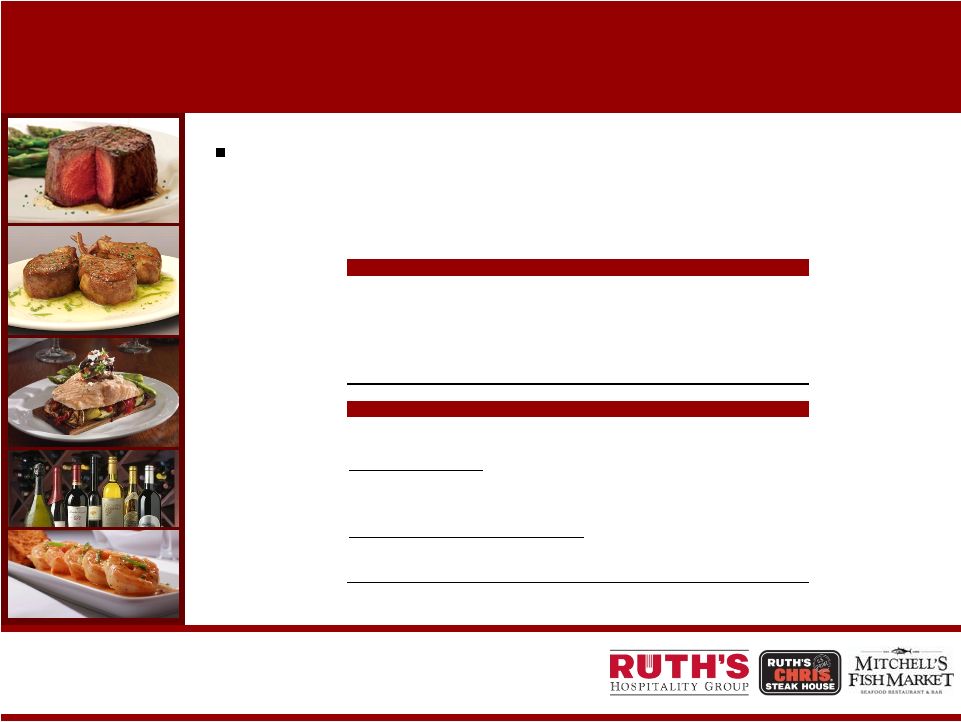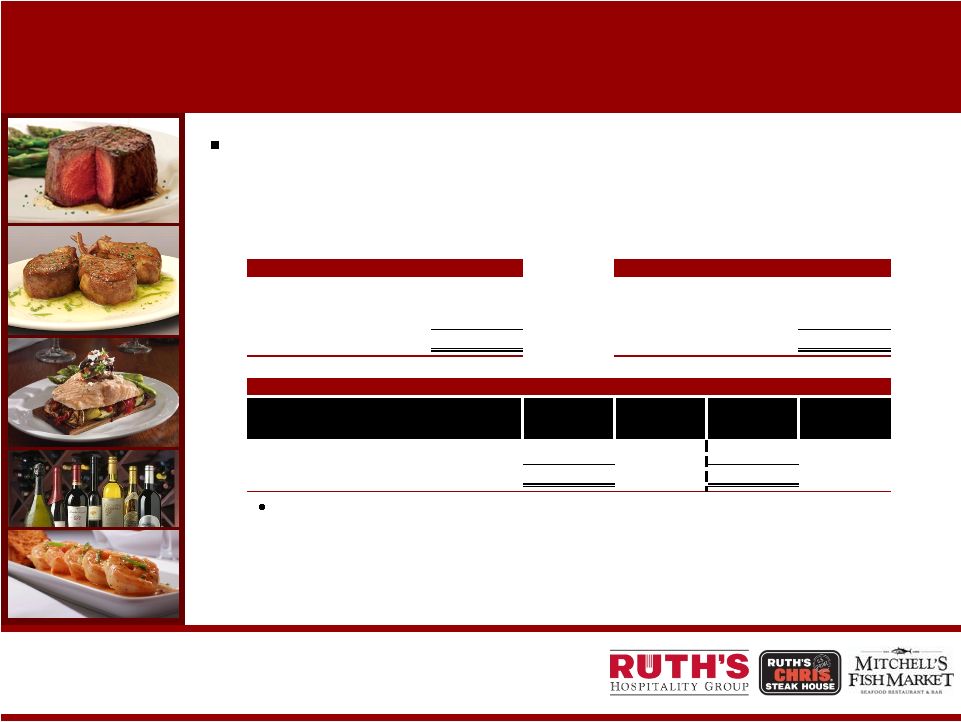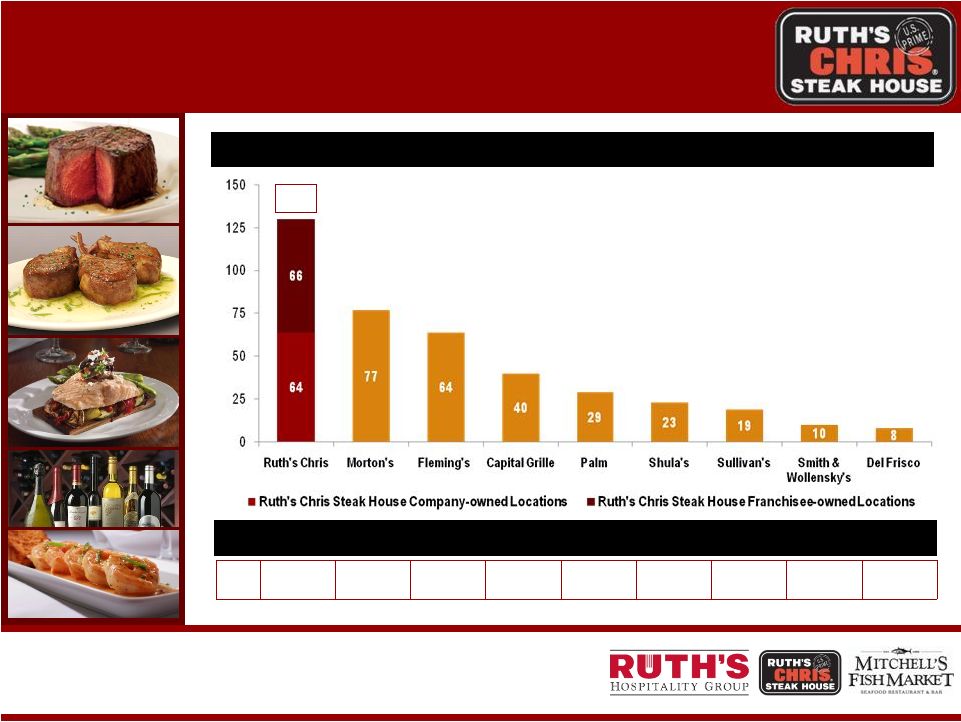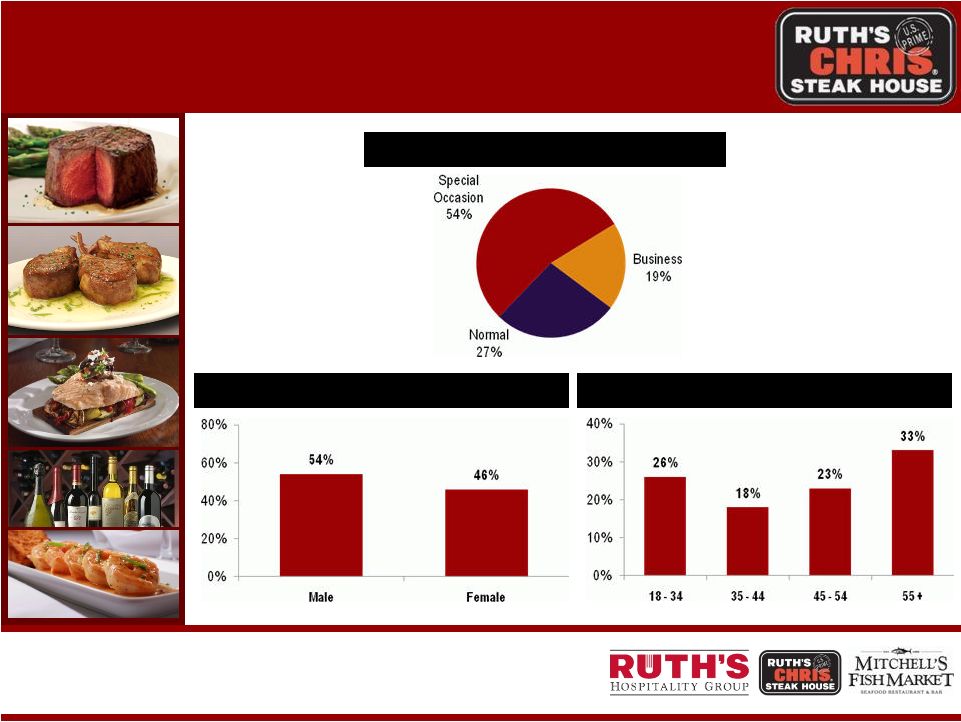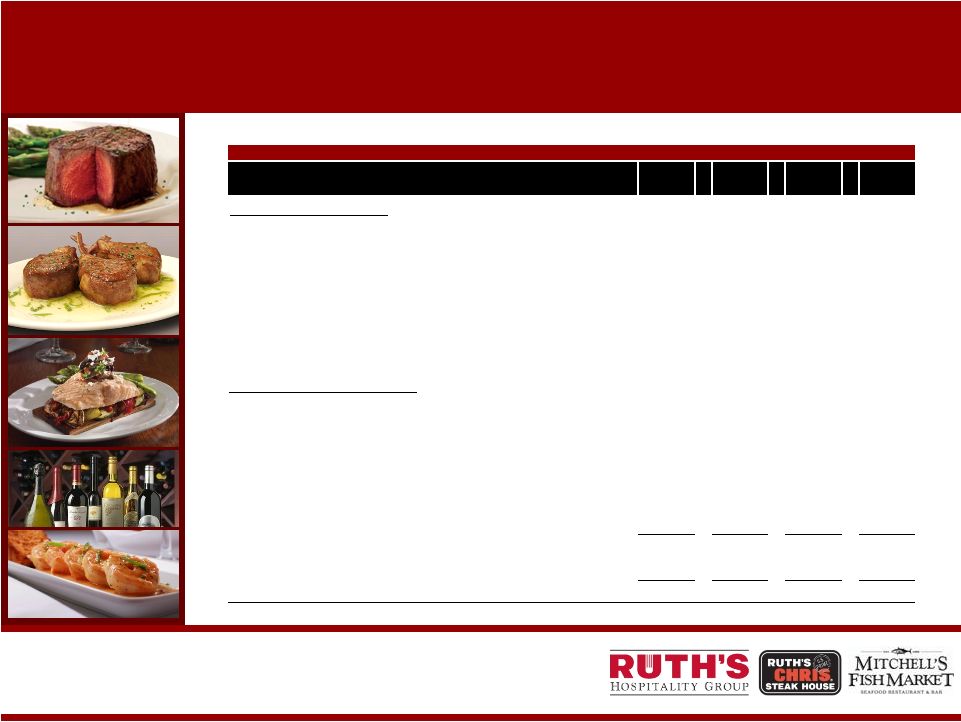Ruth's Hospitality Group EBITDA Reconciliation Adjusted EBITDA is a supplemental measure of the Company's performance that is not required by, or presented in accordance with, generally accepted accounting principles (“GAAP”). Adjusted EBITDA is not a measurement of the Company's financial performance under GAAP and should not be considered as an alternative to revenue, net income (loss) or any other performance measures derived in accordance with GAAP or as an alternative to cash flow from operating activities as a measure of its liquidity. Adjusted EBITDA is defined as net income (loss), plus interest expense net of interest income, income tax provision (benefit), depreciation and amortization, and adjusted for non-cash write-offs or impairment of restaurant asset charges, stock based compensation and non-cash bank fees. Management believes that the inclusion of supplementary adjustments to EBITDA applied in presenting Adjusted EBITDA is appropriate to provide additional information to investors about one of the principal internal measures of performance used by them. Management uses the Adjusted EBITDA measure to evaluate the Company's performance and to facilitate a comparison of operating performance on a consistent basis from period to period. The Adjusted EBITDA measure has limitations as an analytical tool, and should not be considered in isolation, or as a substitute for analysis of the results as reported under GAAP. This measure may not be comparable to similarly titled measures reported by other companies. Adjusted EBITDA per the Company's credit agreement, which we refer to as Bank EBITDA, is a supplemental measure of the Company's performance that is not required by, or presented in accordance with, GAAP. Bank EBITDA is not a measurement of the Company's financial performance under GAAP and should not be considered as an alternative to revenue, net income (loss) or any other performance measures derived in accordance with GAAP or as an alternative to cash flow from operating activities as a measure of its liquidity. Bank EBITDA is defined as Adjusted EBITDA, further adjusted for severance payments, hurricane and relocation costs and other costs, cash write-offs of the Company's Manhattan UN Facility and Mitchell's Fish Market pro forma EBITDA prior to acquisition. Bank EBITDA is used by the Company's creditors in assessing debt covenant compliance and management believes its inclusion is appropriate to provide additional information to investors about certain covenants required pursuant to the Company's indebtedness. The Bank EBITDA measure has limitations as an analytical tool, and should not be considered in isolation, or as a substitute for analysis of the results as reported under GAAP. This measure may not be comparable to similarly titled measures reported by other companies. 38 | 



